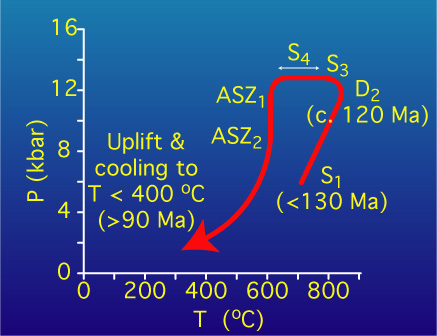Publications
° Daczko, N.R., Clarke, G.L. and Klepeis, K.A. 2002. Kyanite-paragonite-bearing assemblages, northern Fiordland,
New Zealand: rapid cooling of the lower crustal root to a Cretaceous magmatic
arc. Journal of Metamorphic Geology,
20, 887-902.
Abstract
Fiordland, New Zealand exposes the lower crustal root of an Early Cretaceous
magmatic arc that now forms one of Earth’s most extensive high-P granulite
facies belts. The Arthur River Complex, a dioritic to gabbroic suite in
northern Fiordland, is part of the root of the arc, and records an Early
Cretaceous history of emplacement, tectonic burial, and high-P granulite
facies metamorphism that accompanied partial melting of the crust. Late
random intergrowths of kyanite, quartz and plagioclase partially pseudomorph
minerals in the earlier high-T assemblages of the Arthur River Complex,
indicating high-P cooling of an over thickened crustal root by c. 200 °C.
The kyanite intergrowths are themselves partially pseudomorphed by paragonite,
commonly in the presence of phengitic white mica. Biotite–plagioclase intergrowths
that partially pseudomorph phengitic white mica and diopside–plagioclase
intergrowths that partially pseudomorph jadeitic diopside, combined with
published thermochronology results, are consistent with later rapid decompression.
A short duration anticlockwise P–T path may be explained by the high-P juxtaposition
of comparatively cool upper crustal rocks following their tectonic burial
and under thrusting during the waning stages of Early Cretaceous orogenesis.
This was then followed by the decompression giving the rapid exhumation within
20 Myr of peak metamorphism, as suggested by the isotopic data.

|
 ARC Centre of Excellence for Core to Crust Fluid Systems
ARC Centre of Excellence for Core to Crust Fluid Systems